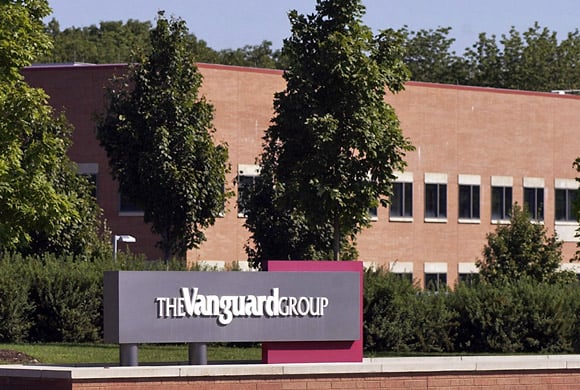Fund firm introduces nine exchange-traded funds; SPDR.500 will be tough to squash
The Vanguard Group Inc. today launched its much-anticipated Standard & Poor's 500 ETF Ticker:(VOO). Not surprisingly, financial advisers are keeping a close eye on how the fund performs and whether it can compete with the 800-pound gorilla in the space: State Street Global Advisors Inc.'s SPDR.500 ETF Ticker:(SPY).
The S&P 500 ETF, a share class of the firm's $86.8 billion Vanguard 500 Index Fund Ticker:(VFINX), was one of nine funds introduced today — all of which are based on S&P indexes and are categorized as share classes to existing Vanguard mutual funds. The total expenses for the S&P 500 ETF are 0.06% — the lowest in the industry, and lower than its main competitor, the $69.9 billion SPDR 500 ETF.
Traditionally, first movers in the ETF space have an advantage because they can achieve scale and thus liquidity, but experts believe that Vanguard — with a strong brand and low costs — has a good chance going up against State Street.
“I don't think anyone else could bring out an S&P 500 ETF and have any success with it,” said Paul Justice, an ETF analyst at Morningstar Inc. “If anyone has a shot, it's Vanguard.”
Financial advisers, who often wait at least 12 months to monitor how an ETF performs before buying in, said they won't wait that long.
“Vanguard has shown its ability to provide low-cost products that don't deviate from the index,” said Rich Romey, president and founder of ETF Portfolio Partners Inc., an advisory firm with $65 million in assets. “I doubt this will have to wait two years for us to use it.”
If the Vanguard ETF proves to have a low tracking error over the next two to three months, Tom Lydon, president of Global Trends Investments, said he would consider using the fund for new assets. “We can't make that decision until we see how it trades, but we would consider it,” he said.
Vanguard, which entered the ETF space nine years ago, has seen its assets boom. As of Aug. 31, the firm's ETFs have attracted $23.3 billion, which represents the lion's share of the $39.4 billion that all U.S. ETFs took in over the same period, according to Morningstar.
The firm doesn't believe that being late to the space means it won't be able to attract substantial interest from investors and asset managers. “Where we have gone head-to-head with exactly the same benchmarks we have capture a proportionate share of flows in those categories,” said Martha Papariello, a principal and head of financial adviser services at Vanguard.
Still, Vanguard has its work cut out for it going up against SPDR 500 ETF. “Currently SPY is the most actively traded security in the world,” said David Nadig, director of research at Index Publications, LLC. “Volume begets volume and there is nothing Vanguard can do to force traders to focus on their fund over SPY.”
However, Vanguard's low costs will be attractive to long-term investors, Mr. Nadig said.
Mr. Lydon said that while he would consider putting new assets into the Vanguard fund if it proves to have a low tracking error, he doubted that he would switch clients out of the SPDR into the Vanguard fund, given that it only costs 0.03% less. “It's not worth trading a current client out to save three basis points,” he said.
And it remains to be seen if SSgA decides to lower its expenses to undercut Vanguard, Mr. Lydon said.
“Anything can happen,” he said.
One possibility: The Charles Schwab Corp., which recently dropped the fees of a number of its ETFs, could lower the fees on its Large Cap ETF Ticker:(SCHX), said Mr. Nadig. “When they came out with their fund they came out at one basis point lower than SPY,” Mr. Nadig said. “They want to maintain the marketing edge to be the least expensive.”
Greg Gable, a spokesman at Schwab, and Jim Ross, senior managing director at SSgA, didn't return calls seeking comment by press time.







